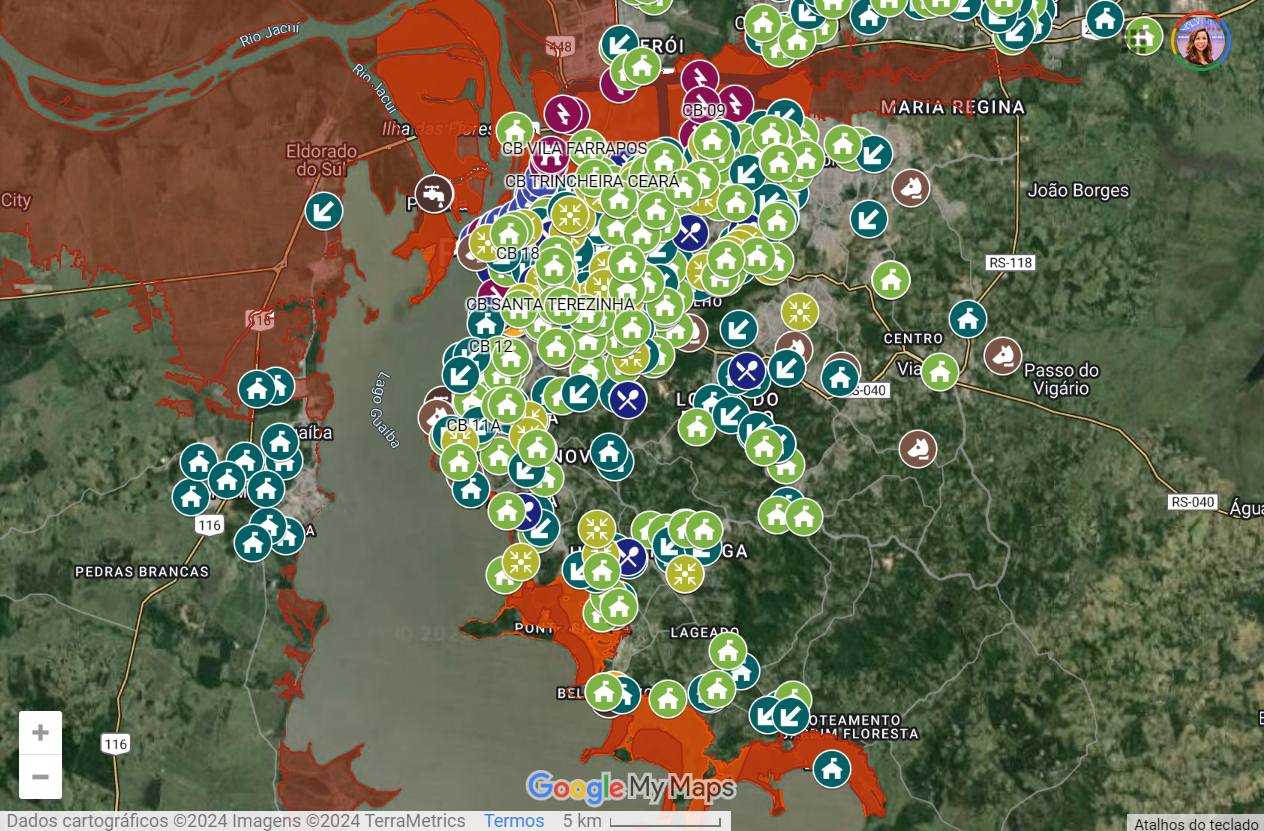Since April 27, the southern region of Brazil has been suffering from heavy rains that have affected more than 400 cities in Rio Grande do Sul and 1.5 million people, leading to a state of public calamity. The state’s universities are playing an important role in recovery efforts, with the support of the Brazilian National Education and Research Network (RNP).
Over the course of a month, there have been more than 160 deaths and 50 missing persons, according to the State Civil Defense. There are also cases of leptospirosis due to water contamination.
In the capital of Rio Grande do Sul, Porto Alegre, the level of Guaíba Lake rose above 5 meters, reaching a historic mark since the city’s largest flood in 1941.
With the compromised facilities, the main universities in the state had to suspend academic activities indefinitely. This includes the Federal University of Rio Grande do Sul (UFRGS), the Federal University of Pelotas (UFPel), the Federal University of Health Sciences of Porto Alegre (UFCSPA), and the Federal University of Rio Grande (Furg), among others.
At the Federal University of Santa Maria (UFSM), the rain flooded the basement of the institution’s Rectory building, damaging the university’s archives with about 12,000 documents.
In the face of the tragedy, these institutions played a fundamental role in combating the rains by sheltering people and domestic animals, providing a fleet for rescues, mediating the collection and distribution of food, among other actions.
An example is the University of the Taquari Valley (Univates), which transferred IT equipment from the main hospital in the city of Lajeado (RS), the Bruno Born Hospital (HBB), to restore the connectivity of the health unit, thus allowing the resumption of essential services. The action had the support of the Brazilian National Education and Research Network (RNP).
According to the National Institute of Meteorology, the heavy rains in southern Brazil can be explained by the effect of El Niño. This climatic phenomenon causes an abnormal warming of the Pacific waters along the equator, preventing the cold front from advancing to other regions of Brazil.
To get a sense of the tragedy and find more detailed information, access the UFRGS Map Repository with geographic information, images, and a database for decision support.
To see the broader impacts of climate change in the country, visit the Adapta Brasil platform from the Ministry of Science, Technology, and Innovation (MCTI), developed through a cooperation between the National Institute for Space Research (INPE) and RNP.







